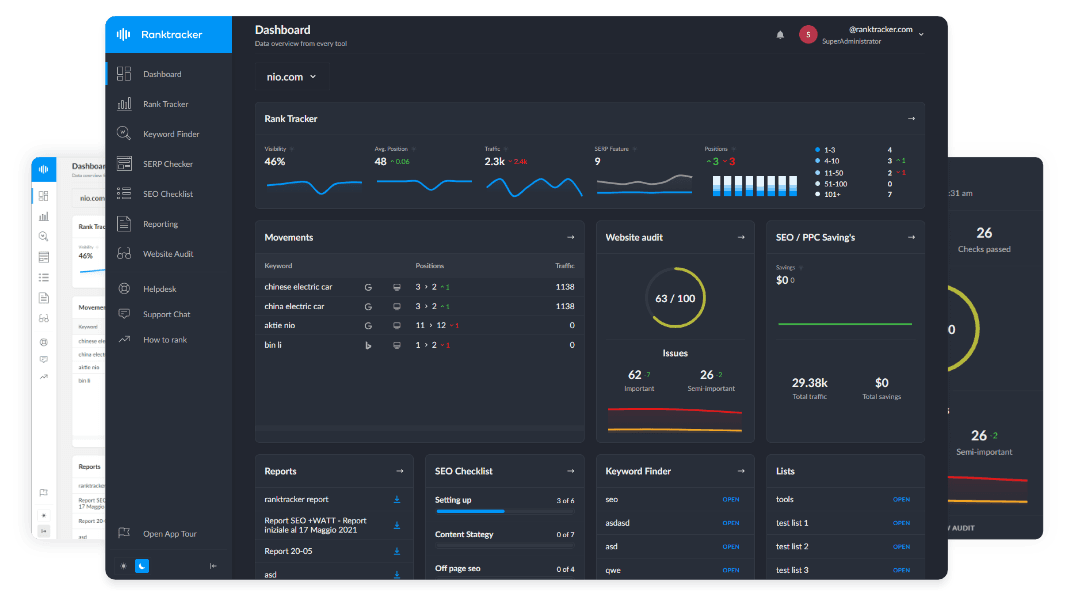Intro
In an ever-changing landscape of search engine optimization rules and strategies, many companies are feeling lost on how to promote their brands online. Especially in the last couple of years, Google and most other search engines have been changing the way they categorize and rank sites on an almost monthly basis, making it extremely difficult for businesses, especially start-ups and small businesses, to adapt and keep up.
So, on the one hand, it’s always necessary to keep up with new SEO developments and stay on top of everything that’s happening. However, it is also just as important to get a proper understanding of the basics of SEO and the fundamentals of what makes it work. One such fundamental is white-hat link building.
In an environment where most other SEO strategies change almost non-stop, white-hat link building continues to be one of the “kings of the hill” of proper SEO and only grows more important with time. So, here’s what white-hat link building is and what the main strategies for it are that actually work and scale in 2025.
What Is White-Hat Link Building?
Link building is the practice of sharing and spreading links to your website and your brand’s pages to other sites on the Internet. This is important for two reasons:
-
It increases your brand’s reach and gets people from all over the World Wide Web access to links to your sites and pages.
-
It helps your SEO ranking and pushes your site’s links to index better on search engines.
Simply put, having links to your site and pages all over the Internet is a good thing. However, how you get there is just as important. This is where the difference between White-hat, Black-hat, and Grey-hat link building comes in.
Without getting too into the weeds of it all, Black-hat link building is what happens when you use link building strategies that go against a search engine’s link spam policies. This typically means buying or selling links, excessive link exchanges, or using programs and bots to create links to your site. Such Black-hat link building strategies not only won’t help your brand in the long run, but will eventually get it off of engines’ searches for good.
Grey-hat link building, on the other hand, doesn’t include technically illegal link building strategies. However, it does include strategies that thread the needle of illegality or that search engines usually dislike and “frown upon,” and may still get your site to rank lower on search engines.
White-hat link building strategies, therefore, are the ones that fully adhere to the rules of a search engine and that will only help you reach more people and rank higher in searches, instead of pushing you lower. Of course, not all White-hat strategies are created equal, and some are still much more effective than others. So, it’s still important to pick the most effective link building strategies you can or hire link building experts who can help you implement and execute these strategies as best as possible.
Top 8 White-Hat Link Building Strategies That Actually Work and Scale in 2025
There are many different ways to get your site’s link to other pages on the internet. Some are much more effective than others, however. For example, simply spamming your site’s links to posts in online forums not only won’t help your site rank much better, but can also constitute “link spamming.”
The All-in-One Platform for Effective SEO
Behind every successful business is a strong SEO campaign. But with countless optimization tools and techniques out there to choose from, it can be hard to know where to start. Well, fear no more, cause I've got just the thing to help. Presenting the Ranktracker all-in-one platform for effective SEO
We have finally opened registration to Ranktracker absolutely free!
Create a free accountOr Sign in using your credentials
Instead, we’d recommend the following strategies that actually work and scale in 2025:
1. Guest Blogging
There are many sites out there that offer guest post opportunities. Not all are considered “high-quality guest posting sites,” however, because search engines often see guest posts as “paid advertising” and don’t ascribe high “link value” to them. Instead, many guest post links are often marked as “sponsored” or “nofollow” and therefore don’t rank well.
However, guest blog posts to the right sites are great for white-hat link building. These are often guest posts to news sites or to other blogs, and not to large aggregator sites. That’s all the more reason to hire link building experts who know what they are doing. For example, you can explore the process behind a well-executed backlink outreach campaign.
2. Pitch Data Studies to Journalists, Bloggers, or Influencers
A great way to get high-quality backlinks is to write a good post full of proprietary data, surveys from reliable platforms, graphics, scientific data from government sites, and so on. Then, pitch your post to journalists, bloggers, and other influencers to share it on their own sites and platforms.
This is as effective and as white-hat as backlinking gets. The best part of using proprietary data is that it’s the type of data no one else can recreate or access, including AI. So, this type of link building ranks very well.
3. Create and Share Infographics
Similar to above, pitching infographics with your brand’s links and info related to them to bloggers and journalists is a great way for link building. You can pitch such posts via email and DMs. Bloggers, in particular, love sharing well-made infographics when they are related to their own field and audience.
4. Resource Page Link Building
Countless websites out there have pages with curated lists of “useful resources” that relate to their own niche. If you have valuable information published on your own site relating to that same niche, a very simple and effective white-hat strategy is to just contact such websites directly via email and suggest that they add a link to your content to their lists of useful resources.
5. Publish Your Own Original Research and Data
Simply creating high-quality original content is always a good idea in and of itself, but it also goes a long way to improving your link building. For many, this doesn’t constitute as a “strategy,” but we’d say it’s the best long-term strategy.
If you simply continue to publish your own original content, research, and data, other sites, bloggers, journalists, and influencers will start using it over time. That content needs to be both well-written and properly optimized, of course, but that’s always a given anyway.
6. Replace Broken Link Building
A much simpler short-term strategy is to look for outdated and broken links on relevant websites. Then, you can simply contact the webmasters of these sites and pitch them your own link to replace the broken ones with. If your pitch is good (and the link you’re suggesting is suitable), many webmasters will agree to simply add your link to their posts.
7. Locate Unlinked Mentions of Your Brand
Another simple short-term strategy is to find already-existing mentions of your brand online. Then, you can just contact the webmasters behind those sites and ask them to add links to your mentions. This is also very effective, as adding such links is beneficial both for you and for their SEO, so it’s a win-win.
8. Share Brand News to Journalists, Bloggers, or Influencers
This is effective for both start-ups and major companies. All you need to do is post news about your brand in a way that’s industry-relevant or news-worthy, and then pitch those posts to journalists, bloggers, and other influencers. If the posts are indeed interesting, many will agree to share them.

